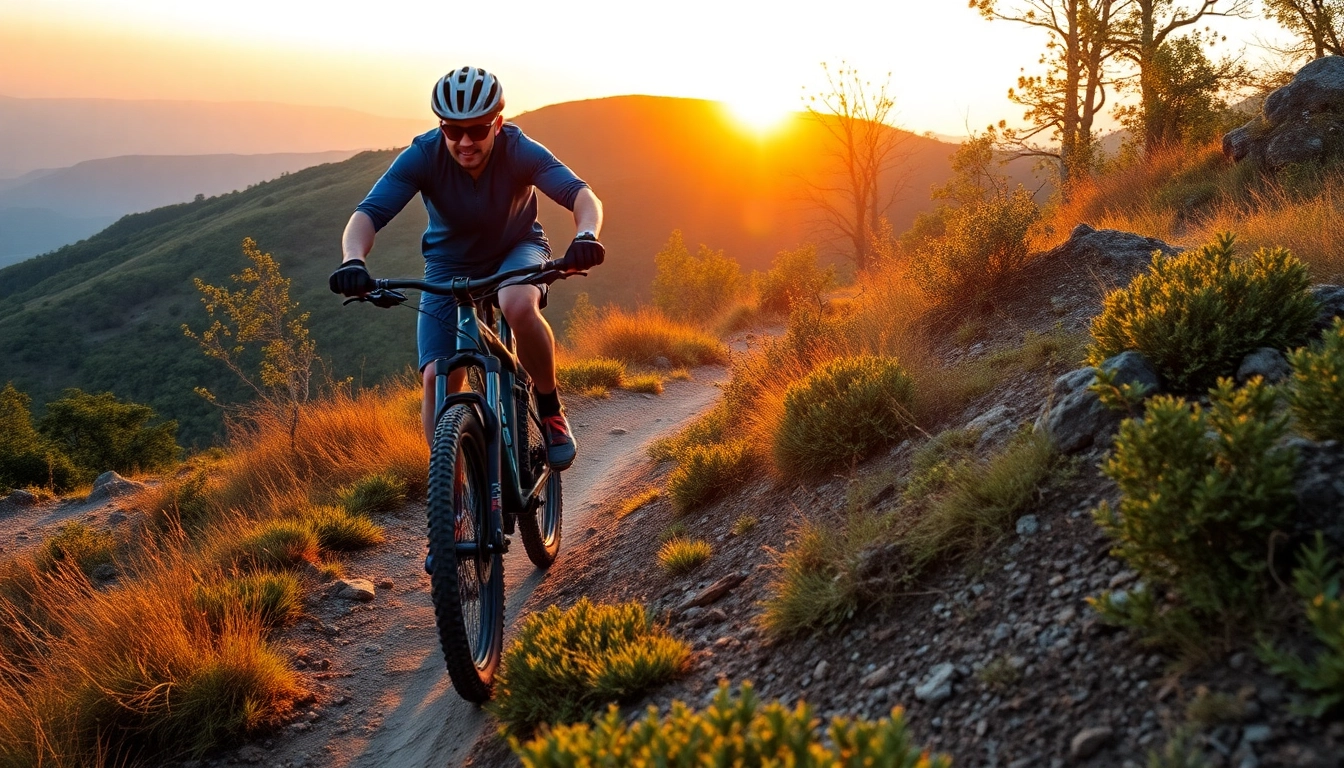
Top Trek Biking Adventures in Indonesia: Your Guide to Unforgettable Trails
Understanding the Popularity of Trek in Indonesia
Indonesia, renowned for its diverse landscapes and rich cultural heritage, has become a hub for outdoor enthusiasts seeking adventure through trekking, cycling, and exploration. Among the various activities, trekking holds a special place owing to its accessibility, physical challenge, and ability to connect travelers with nature’s most stunning scenery. Notably, the popularity of Trek in Indonesia has surged over recent years, driven by geographic and cultural factors that make this archipelago an exceptional destination for adventure tourism.
This comprehensive guide delves into the multifaceted aspects of trekking in Indonesia, from its historical growth to the best trails and essential gear. Whether you’re an avid cyclist, a novice hiker, or an eco-conscious traveler, understanding Indonesia’s landscape and its burgeoning trekking scene will equip you with the knowledge to embark on unforgettable journeys across this vibrant country.
Geographic and Cultural Factors Driving Trek Tourism
Indonesia’s vast archipelago encompasses diverse terrains—from lush rainforests and active volcanoes to pristine beaches and rugged mountains. This geographical diversity offers an unparalleled variety of trekking experiences suitable for all skill levels. The island of Lombok, for example, boasts the world-famous Mount Rinjani, Indonesia’s second-highest volcano, attracting trekkers eager for challenging ascents and breathtaking crater lakes.
Culturally, Indonesia’s diverse ethnic groups and traditions further enrich the trekking experience. Travelers often encounter local villages along trails, providing opportunities for cultural exchange and insight into traditional lifestyles. Indigenous communities and their hospitality play a significant role in promoting sustainable trekking, which not only benefits local economies but also fosters cultural preservation.
Moreover, Indonesia’s commitment to eco-tourism and adventure travel has incentivized the development of well-maintained trails and facilities, making trekking more accessible and compelling for international visitors. These efforts are supported by local governments and community organizations that recognize the economic and environmental benefits of responsible tourism.
Why Trek Bikes Are Ideal for Indonesian Terrain
As a country with diverse landscapes—from coastal plains and dense jungles to mountainous regions—Indonesia demands versatile and durable bicycles. Trek bikes, known globally for their engineering excellence and adaptability, are an excellent choice for exploring Indonesia’s challenging terrains. Whether riding through mountain trails, coastal paths, or rural roads, Trek’s extensive range of bikes provides options tailored to every adventure type.
For mountainous terrains, Trek’s mountain bikes featuring lightweight frames, robust suspension, and high-performance gearing allow riders to conquer steep inclines and rugged surfaces confidently. Similarly, for long-distance cycling along coastal roads or urban environments, Trek’s road bikes and hybrids offer comfort, speed, and efficiency.
Furthermore, Trek’s innovative features like OCLV carbon fiber frames reduce weight without compromising strength, enabling riders to cover greater distances with less fatigue—an essential factor for multi-day treks across Indonesia’s varied terrain. The availability of electric models also enhances accessibility, helping riders overcome challenging ascents or extended trail distances.
Historical Growth of Trekking and Cycling Communities in Indonesia
The rise of trekking and cycling communities in Indonesia has been instrumental in shaping the vibrant outdoor culture of the nation. Since the early 2000s, local clubs and international organizations have organized group rides and trekking expeditions, fostering solidarity among enthusiasts and encouraging sustainable practices.
Notable milestones include the establishment of cycling festivals such as Bali Bike Week and Lombok Adventure Run, which attract thousands of participants annually. These events showcase Indonesia’s natural beauty while promoting responsible tourism and active lifestyles. The emergence of social media platforms has further accelerated community growth, allowing enthusiasts to share tips, routes, and success stories, inspiring newcomers to explore Indonesia’s trails.
Importantly, this growth has spurred infrastructural improvements—such as signage, trail maintenance, and safety facilities—making trekking and cycling safer and more appealing to a broader audience. The enduring enthusiasm and expanding network of community-led initiatives continue to elevate Indonesia’s status as a premier adventure tourism destination.
Best Trekking and Cycling Routes in Indonesia
Mountain Trails in Lombok and Bali
Lombok’s Mount Rinjani is arguably Indonesia’s most iconic trekking destination. Rising 3,726 meters above sea level, it offers multiple routes ranging from moderate to strenuous, catering to both novices and seasoned climbers. Trekkers are rewarded with panoramic views, volcanic craters, and geothermal springs, making for an unforgettable experience.
Bali, renowned for its cultural richness, also features impressive mountain trails around Mount Agung and Mount Batur. Though less challenging than Rinjani, these volcanoes provide awe-inspiring sunrise experiences, lush landscapes, and a chance to immerse in local spiritual practices at mountain temples.
Coastal and Jungle Paths for Adventurers
Coastal routes such as the Bali Coastal Trail and the Komodo Island Trek combine sea vistas with wildlife encounters, including sightings of Komodo dragons, sea turtles, and manta rays. The jungle trails in Tanjung Puting National Park and Way Kambas offer immersive rainforest experiences, with opportunities to observe orangutans and diverse avian species.
Accessible Routes for Beginners and Experts
For newcomers, the Kintamani region in Bali provides beginner-friendly trails with scenic views and manageable terrains. Meanwhile, experienced trekkers can challenge themselves with the Ijen Crater hike in East Java, famous for its surreal blue flames and sulfuric landscape.
Essential Equipment and Gear for Trekking with Trek Bikes
Choosing the Right Trek Bicycle Model
Selecting an appropriate bike depends on terrain, distance, and rider experience. For rugged mountain trails, Trek’s Marlin or Fuel EX series, with full-suspension systems, provide stability and control. On paved paths or longer rides, the Emonda or Domane models offer lightweight frames and aerodynamic efficiency.
Electric bikes (e-bikes), such as Trek’s Rail or Verve models, are increasingly popular for longer expeditions or areas with challenging elevation changes, reducing fatigue and extending exploration capacity.
Accessories to Enhance Performance and Comfort
Gear such as quality helmets, hydration packs, puncture-resistant tires, and multi-tools are essential. Protective gloves, sunglasses, and appropriate clothing tailored to climate conditions ensure safety and comfort. GPS devices and mobile apps help in navigation, especially in remote or poorly marked trails.
Safety Tips for Long-Distance Trekking
Proper planning, including checking weather forecasts and informing someone about your itinerary, is critical. Carrying a first aid kit, sufficient water, energy snacks, and a communication device can make the difference in emergencies. Regular breaks and maintaining a steady pace help prevent fatigue and injuries.
Planning Your Trekking Adventure in Indonesia
Best Seasons and Climate Considerations
Indonesia’s tropical climate means heavy rainfall during the monsoon season (November to March), which can hinder trekking activities and cause trail erosion. The dry season (April to October) offers optimal conditions—clear skies and stable temperatures—ideal for outdoor pursuits.
However, specific regions may have microclimates; thus, checking local weather patterns before planning is essential. Additionally, high-altitude trails like Rinjani may experience cooler temperatures, so packing accordingly is advised.
Preparing Your Route and Booking Guides
Scout your routes through local guides or tour operators experienced in Indonesian trekking. Expert guides ensure safety, provide cultural insights, and help navigate remote areas. Advanced booking guarantees access to permits and accommodations, particularly in protected or popular sites.
Utilize online platforms or local tourism offices to gather detailed maps, trail descriptions, and logistical support. Planning multi-day treks requires consideration of accommodation options, food supplies, and transportation, which should be arranged well in advance.
Local Cultures and Etiquette to Respect
Respect for local customs and cultural sensitivities enhances the experience. Dress modestly when visiting villages, ask permission before photographing locals, and adhere to environmental guidelines. Engaging with local communities supports sustainable tourism and fosters mutual respect.
Maximizing Your Experience and Supporting Sustainable Trekking
Environmental Conservation Practices
Adopt Leave No Trace principles: dispose of waste responsibly, avoid damaging flora and fauna, and stick to designated trails. Participating in cleanup activities and supporting conservation projects helps preserve Indonesia’s natural beauty for future generations.
Community Engagement and Responsible Tourism
Economically supporting local businesses—such as homestays, markets, and guides—ensures that the benefits of tourism are distributed equitably. Educating yourself about local ecosystems and cultural heritage fosters respectful interaction and responsible behavior throughout your journey.
Sharing Your Adventure and Inspiring Others
Document your trekking experiences through photography, blogs, or social media to inspire broader participation in sustainable adventure tourism. Sharing success stories encourages others to explore responsibly, contributing to the growth of eco-conscious trekking communities in Indonesia.


